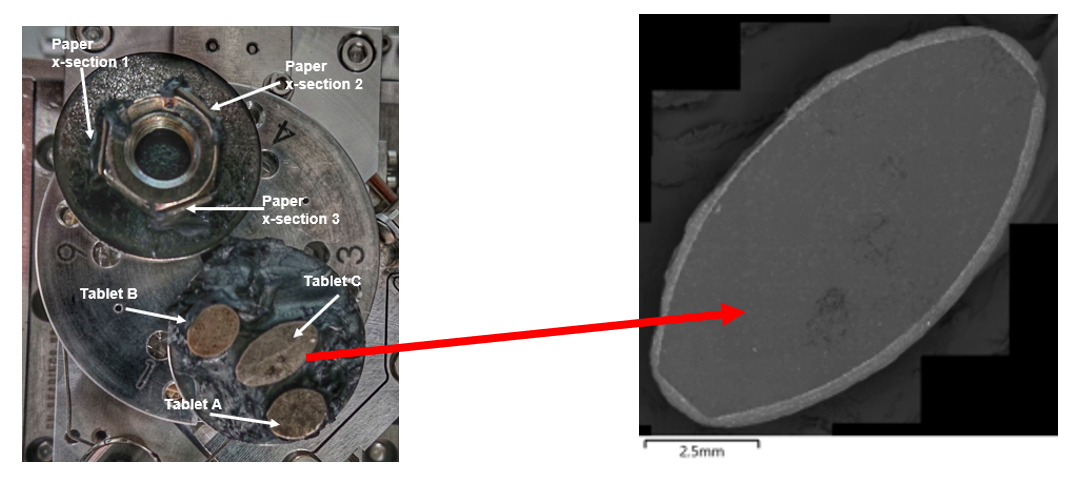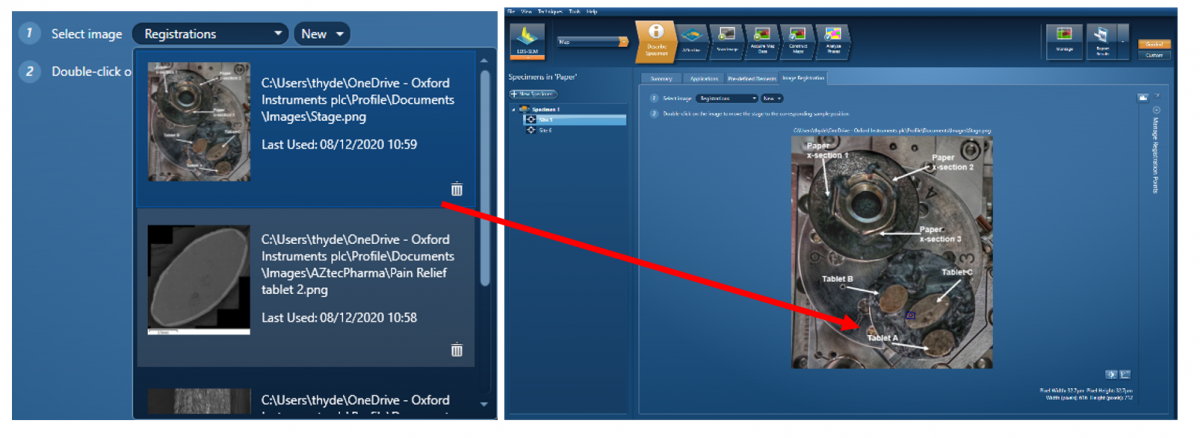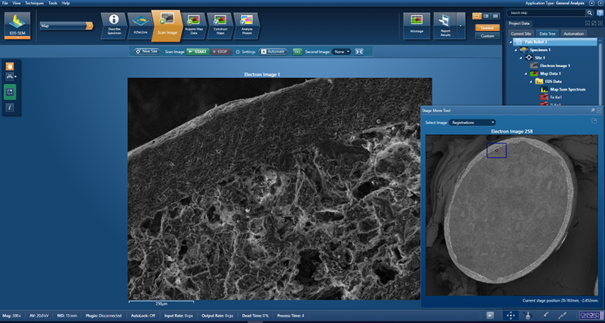The COVID-19 pandemic changed the way we work today, and many of these changes are here to stay, and this is as true for those using SEM as for many other types of work, either in the office or in the lab. Indeed, the challenges of COVID resulted in the development or improvement of techniques which have resulted in improved access for data analysis without requiring direct access to the microscope, yielding efficiencies for all.
Initially, not all remote working has been so straightforward. For those attempting SEM-EDS analysis remotely, the experience could be described as frustrating and slow. All but the most determined might have fallen at the first hurdle. Aside from connection problems, one of the most time-consuming issues was setting up two remote connections: one for the SEM and one for the EDS system. This generally meant users had to continually switch between the two connections as they investigate their samples. The majority of SEM-EDS installations were never designed to be used in this way. If this type of working was to become the norm, then the software needed to adapt.
One fundamental aspect to any analysis was to be able to see the electron image while moving around a sample. When we found something of interest, we’d stop and acquire EDS data. Within the AZtec software platform we had the components that could help, but because they were never designed with remote working in mind, they were not intimately linked. For example, we had Live Chemical Imaging where we acquire a live electron image, live X-Ray maps and live spectrum. We could also register an image of the sample currently being analysed for stage control. However, prior to COVID, these two functions were not closely/ergonomically linked for remote working.
AZtec remote operation and a common user case
With the more recent releases of the AZtecLive platform, we have made significant modification to our software to incorporate ‘Remote Working’ as a fundamental design concept. Let us take a common user example of a lab manager who wants to set up an SEM equipped with an EDS system for remote analysis. In this case, there is an important requirement to maximise the system usage by putting in as many samples as possible. These samples can be for one or more users. Each remote user will be allocated a time slot to access the microscope and will not want to waste time in setting up the system or be frustrated by a complicated sample investigation process.
Process
The lab manager can mount several samples on a microscope stub holder, then take a photo of the entire holder with a Smartphone or a dedicated optical camera. If the samples are relatively large, the lab manager might also take individual photos of the samples. While the samples are pumping down in the microscope, the images can be imported into the AZtecLive PC. At this stage, the images can be annotated if desired to identify each sample.
These images can then be imported into and registered in AZtecLive. If any of the samples are small or the registered image requires more detail, the lab manager can take an electron image of the sample and register it. If the sample is relatively big but more detail is required, then a quick Large Area Electron Image can be acquired, and the montaged image will be automatically registered as shown in the example below:
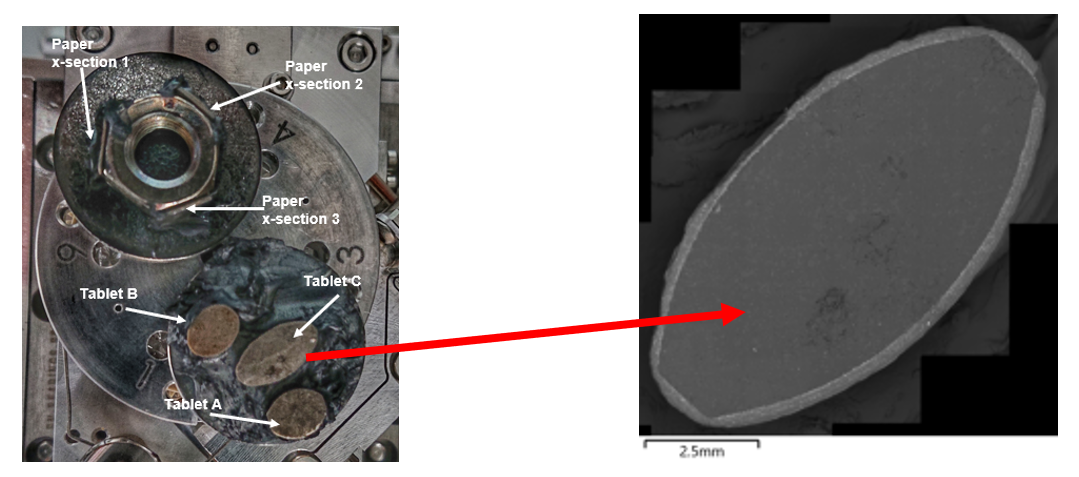
Remote User
When the remote user accesses the system, the overall image of the sample holder is simply selected. Double-clicking on the sample to be analysed automatically addresses the microscope stage, which will then automatically bring the sample into the field of view and the analysis can begin.
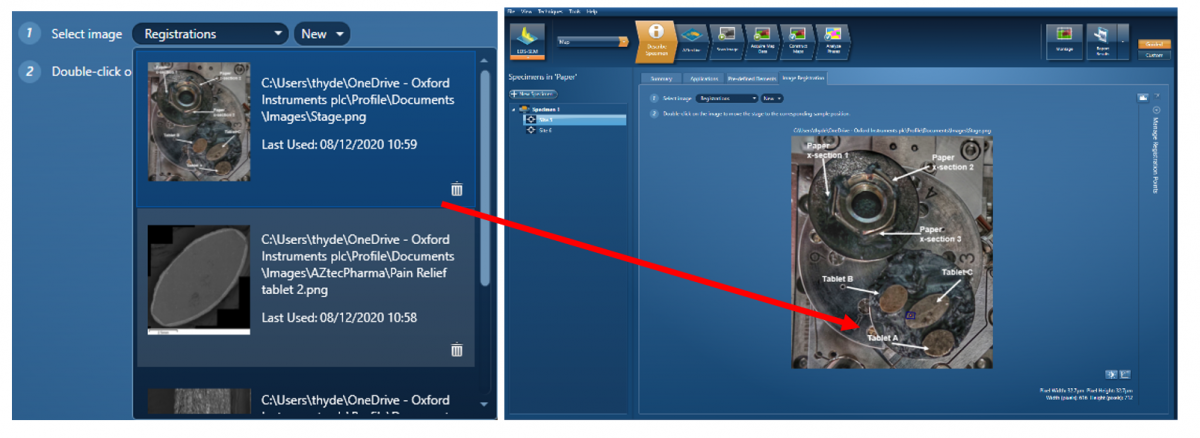
Alternatively, if an individual image of the particular sample has been registered, then this can be used instead.
One of the main frustrations from users was that after an analysis of an area was completed, the process of moving to a new area was time-consuming. Instead of going back to the image registration step or the SEM interface, the user could take advantage of a new ‘Pop-Up’ stage control panel. This is accessed via the status bar at the bottom of the AZtecLive user interface. All users have to do now is to ‘double click’ on the area of the sample that they wish to move to.
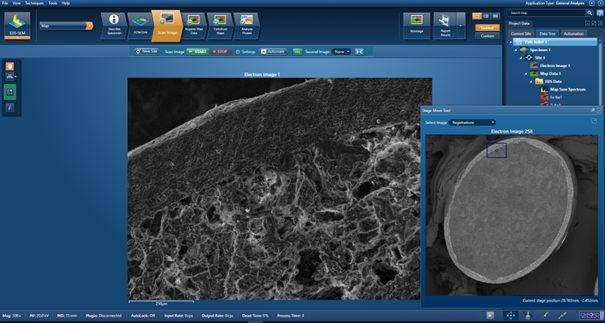
A personal AZtec licence
To further enhance the electron microscopists’ ability to access and analyse data, we developed a 12-month personal subscription licence for installation on your desktop or laptop, AZtecFlex. This has been specifically designed to let AZtec be used anywhere and without needing to access shared facilities.
AZtecFlex includes advanced data processing features, for example, particle analysis and EBSD data processing, allowing users to access them even if they aren’t enabled on the system used to acquire the data. The licence provides access to the latest AZtec release as soon as it is available.
These new and other modifications to the AZtecLive platform have made remote SEM-EDS investigation a productive and enjoyable experience, whether as a single user trying to find areas on a complex sample, or where multiple samples for multiple users have been loaded into the microscope. Additionally, using AZtecFlex, the data can be analysed from anywhere at any time, further increasing convenience and productivity.


